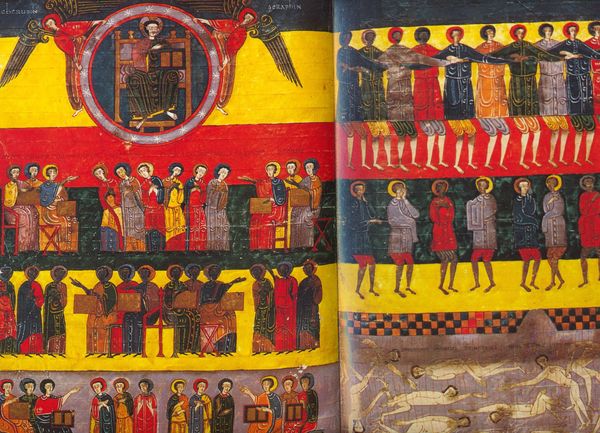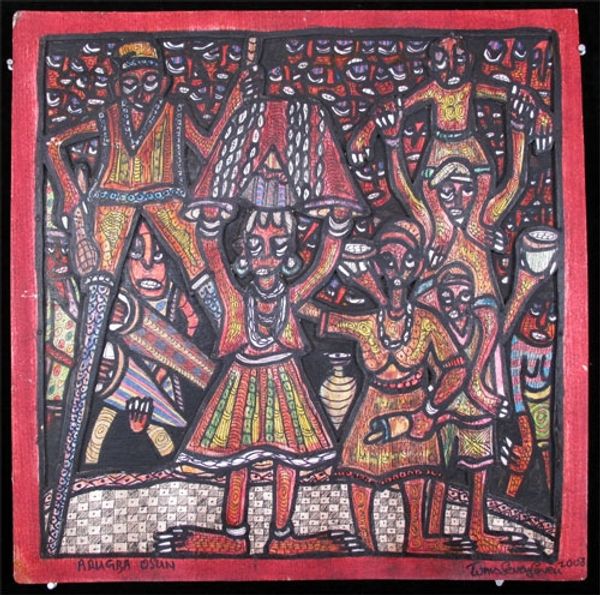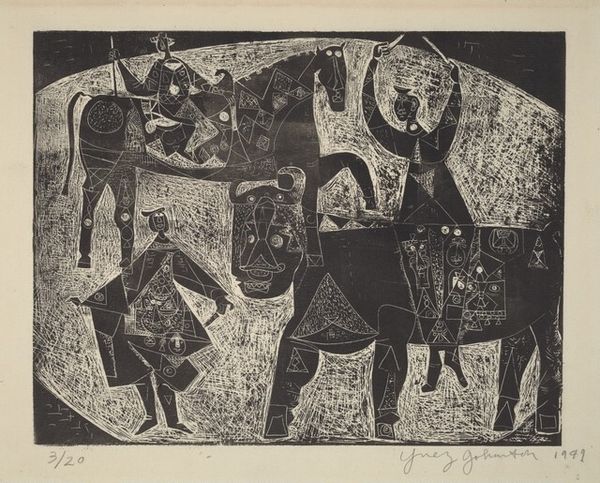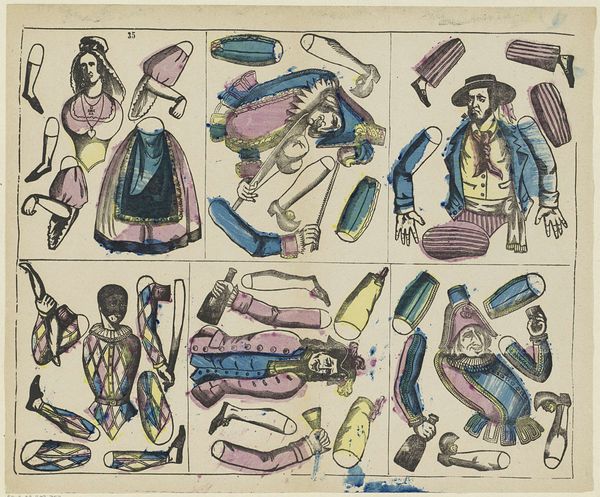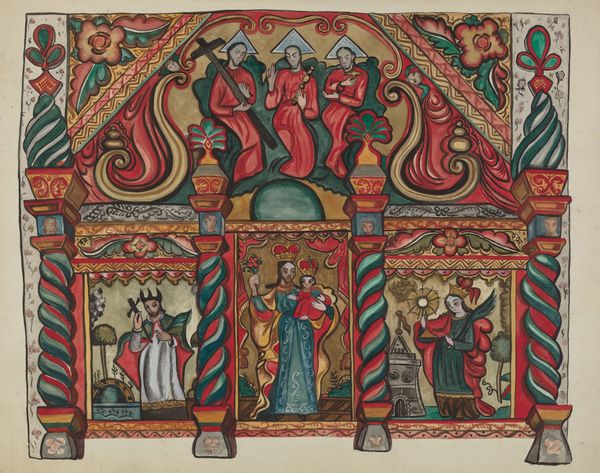
Dimensions: image: 43.8 x 57.7 cm (17 1/4 x 22 11/16 in.) sheet: 50.3 x 65.6 cm (19 13/16 x 25 13/16 in.)
Copyright: National Gallery of Art: CC0 1.0
Curator: Welcome to this gallery featuring "Passeggiata Romana," or "Roman Promenade," a colored-pencil and print piece from 1955 by Massimo Campigli. Editor: My first thought is how this piece reminds me of an ancient fresco, worn by time. The figures feel almost like they are emerging from the walls, which gives a wonderful layered effect. Curator: That's an astute observation. Campigli was deeply inspired by ancient art, especially Etruscan art and Roman antiquity, which he encountered frequently during his time in Italy. The geometric shapes of the women echo figures he saw in museum settings. Editor: Precisely. Notice how each figure has sharp, angular contours, but their posture gives the impression of walking along the promenade. Even the choice of material, the colored pencil and print on paper, seems to lend a sense of antiquity that aligns with his Etruscan references. Curator: Campigli spent many years working as a journalist, witnessing significant shifts in Italian society. After World War II, Italy went through major industrial changes, leaving artists looking for stability and a rooted national identity. This reference to the pre-Roman past suggests a yearning for more stability, perhaps. Editor: The umbrellas are interesting structural counterpoints; observe how each form in the print offers a geometric echo to forms found elsewhere in the composition. See, too, how Campigli manipulates texture using hatching to distinguish the subjects, almost to highlight individuals and separate them from the larger crowd in his artwork. Curator: What do you think it conveys, this 'Roman Promenade'? To me, it seems Campigli invites us to ponder Italy’s heritage. He’s not merely reproducing what he sees but reinterpreting his visions of these older Italian societies. In many ways, Campigli re-envisioned the values he thought that contemporary society seemed to have cast aside. Editor: Absolutely, I agree that is a striking contrast to contemporary themes and artistic styles from that moment in history. All things considered, "Passeggiata Romana" gives me a very profound sense of looking back—pondering not only the artwork’s composition but the social values being portrayed. Curator: And I hope this little promenade of ours today has given everyone a glimpse of it too. Editor: Indeed! Thanks for joining our promenade.
Comments
No comments
Be the first to comment and join the conversation on the ultimate creative platform.

